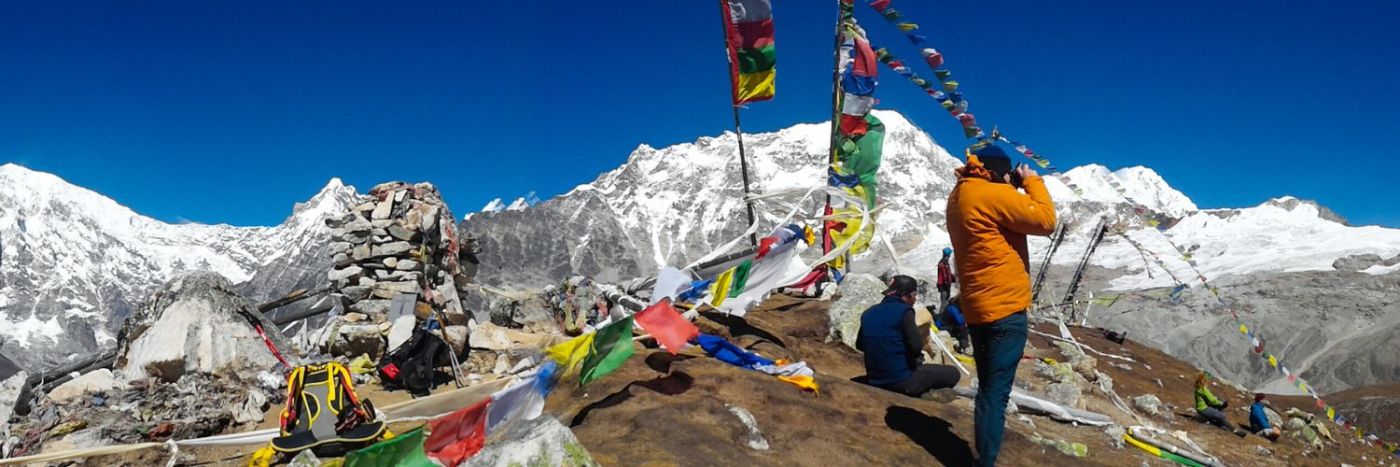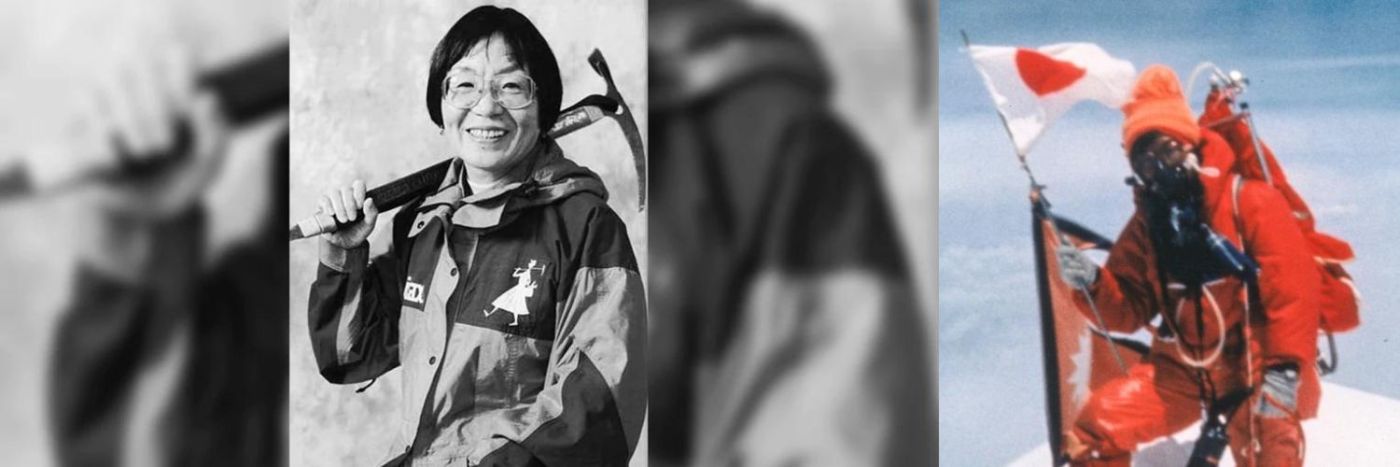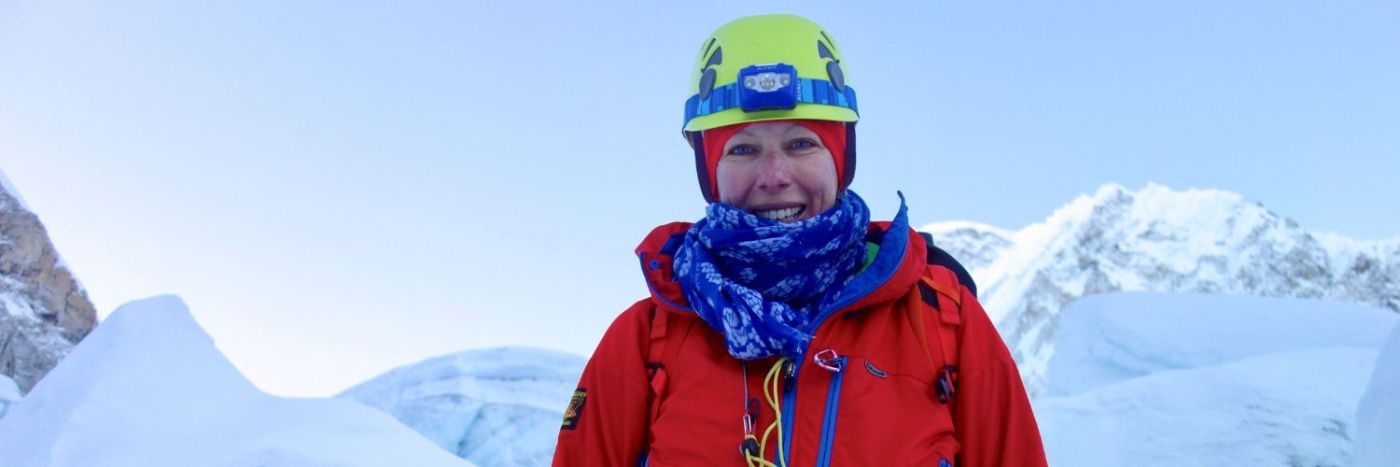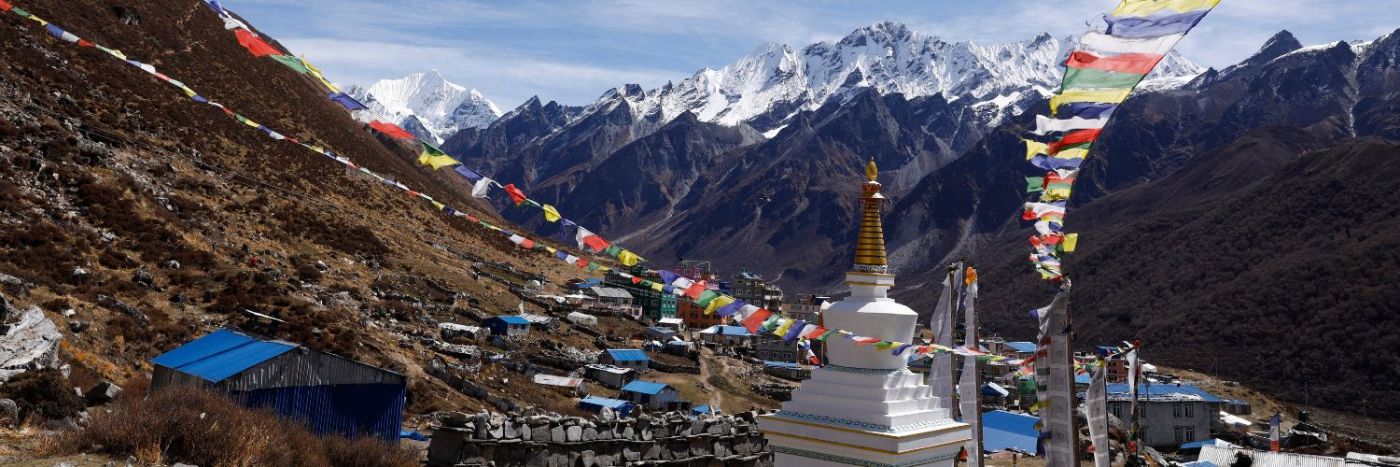Why Climb Yala Peak by Jo Bradshaw, Everest Summiteer
Yala Peak – I’m sorry, where?
Why are you organising an expedition to a mountain not many have heard of? Why not!
If your reaction is similar to the above, don’t worry, you will not be alone. Honestly, I had the same response when I was researching an easily accessible peak also climbed by the first woman to summit Everest, Japanese mountaineer Junko Tabei. Junko who? I also hear you say. Don’t worry, I was there once too.
A peak you have never heard of and a mountaineer who has a strong hold in mountaineering history but is often overlooked. Not an inspiring combination to promote an expedition, or is it! This expedition has many a hook so please read on as 2025 is a year which marks 2 significant anniversaries.
1) Junko Tabei – the first woman to summit Mount Everest and ascend the Seven Summits
The first is the 50th anniversary of the first woman to climb Everest. On 16 May 1975 Junko Tabei reached the summit of this iconic peak after a tricky expedition which saw her being briefly buried in an avalanche at Camp 2 on her ascent. Her route to the mountain itself was one fraught with setbacks and many nay-sayers telling her that an all-female team would never work, that no one would sponsor them, who did she think she was trying such a feat, why wasn’t she at home looking after her baby? However, there she was on that day, standing at 8848m making her mark in the history books. Her own book, Honouring High Places, is well worth a read. She is truly an incredibly inspiring individual. (more easily attainable on Kindle than in paperback).
Junko returned to Nepal many times after climbing Everest, including leading an expedition to summit a lesser known 5550m mountain which resides in the Langtang region, Yala Peak.
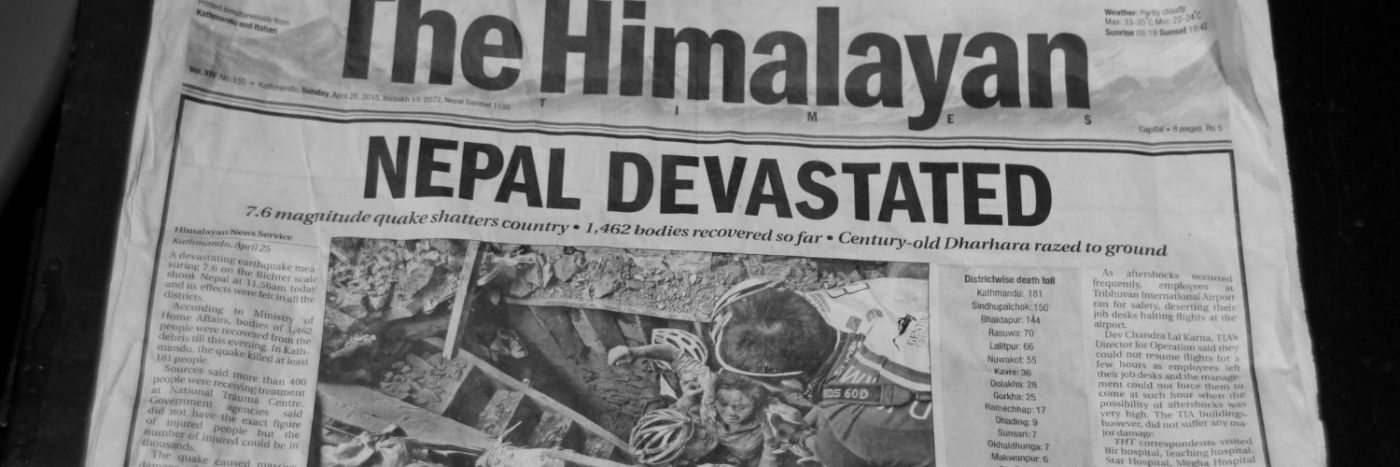
2) 10th Anniversary of the devasting earthquake in Nepal
2025 also marks the 10th anniversary of the 7.8 magnitude earthquake which rocked Nepal. 25 April is etched in my brain as I was at Camp 1 on Everest at the time, thinking that my life was over as we were avalanched and shaken to the core. We survived, many did not. 19 lost their lives at Everest Base Camp, 9,000 across the earthquake zone with hundreds of thousands displaced. In the Langtang Valley, the resulting landslides which were triggered by the earthquake flattened and buried all bar one of the 42 tea houses in Langtang village, killing many and making those who lived there homeless. The Nepali people are a resilient nation and they set to work straight away to rebuild and regenerate. Soon after the village was welcoming trekkers again and 10 years on it is a bright and vibrant hub of activity. Langtang is also one of the villages we stay in during our trek to Yala Peak Base Camp before our attempt on the summit.
With 2 anniversaries in one expedition, one to celebrate, one to commemorate, this is going to be a poignant journey which begins in the hubbub of Kathmandu where we will be immersed into the sights, sounds and smells of this iconic capital city before heading north on an exhilarating road journey by jeep to our starting point at the gateway to the Langtang National Park. Formed in 1976 as Nepal’s first national park covering an area of 1,710 sq/km and has a high diversity of vegetation types and ecosystems in a topography ranging from tropical forests to perennial ice. Welcoming the fresh country air in our lungs, we swap 4 wheels for 2 boots and over the next couple of days gradually wend our way up the valley passing many historical sites which are part of the landscape including Gompas and Chortens before we reach Langtang village. The village was featured as part of the Netflix documentary series ‘Aftershock – Everest and the Nepal Earthquake’ which concentrated on 3 areas devastated during the earthquake: Langtang village, a hotel in Kathmandu and Camp 1 on Everest.
A few days after the earthquake in 2015 I walked back down the Khumbu Valley from Everest Base Camp to Lukla, seeing the devastation which Mother Nature had wreaked on the area as I went by and I was so overwhelmed by the ‘get on with it’ attitude of the locals. I was passed on numerous occasions by porters heading up the valley carrying loads of plywood, ladders, lengths of wood and supplies to start the rebuild and this was the same in the Langtang Valley. 10 years on and the village is a thriving hub of tourism and farming activity. The earthquake’s scars are still evident, but life goes on.
As we gain height and the views become more spectacular, the air thins, the temperature drops and we feel as though we are making progress towards our ultimate goal, Yala Peak.
I asked our local agent and long-time friend Niraj the origins of the name Yala Peak who sourced the information from a monk in Kyanjin and a local climbing guide and this is their explanation. ‘Ya’ in Yala is a derivative from the word ‘Yalmo’ which means Yeti in Sherpa/Tibetan language. The last 2 letters ‘la’ means peak. The legend has it that many yetis inhabited the area around present day Yala Peak.
In Arabic, Yalla means ‘let’s go’ and, even though our Yala Peak has one l, I like the synergy of the words and the meaning. Having read Junko’s book and understood her enthusiasm I can imagine her encouraging her group up the mountain with a well timed ‘let’s go!’ every now and then.
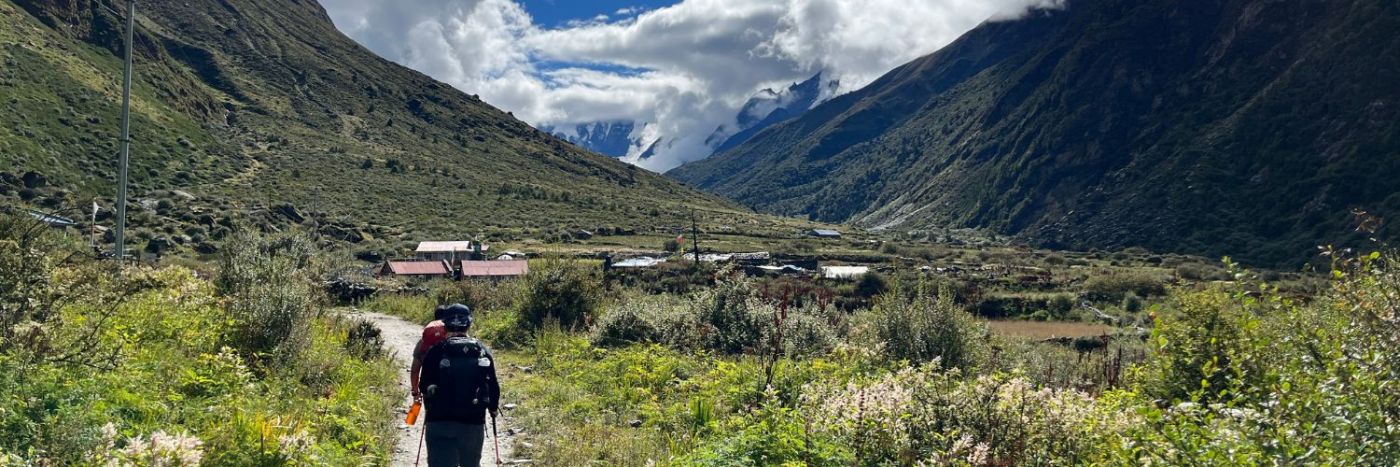
Even though our proposed peak is lesser known, the village of Langtang is a popular destination as is our next stop Kyanjin Gompa where we hunker down for a couple of days to aid acclimatisation, gaining elevation during the day and sleeping in a vibrant tea house at night before our final night before summit which is under canvas. Kyanjin Gompa is visited by a multitude of trekkers and tourists of many nationalities for a variety of reasons. Some come to see the landscape, enjoying the walk to and fro in this iconic national park. Some see the trek to Kyanjin Gompa as a pilgrimage, whether spiritual or religious, immersing themselves in the history of Buddhism and some, like us, visiting on the way to greater heights. Our own pilgrimage.
Whether you have climbed to 5550m before or are looking for a new altitude personal best, the buzz of waking up before dawn to head up to your summit is often a mixed bag of excitement, nerves and exhilaration. Have I packed the essentials? Will I be warm enough? How will I deal with the altitude? What happens if I reach my own summit before we reach the peak? Am I capable? Will I be too slow? All of these questions are quite normal and all are easily answered in a variety of ways. The most important aspect is your willingness to give it a go, one foot in front of the other. The rest will take care of itself with the support of me as your expedition leader, our local guides and the rest of our team. Left foot, right foot and your body will follow.
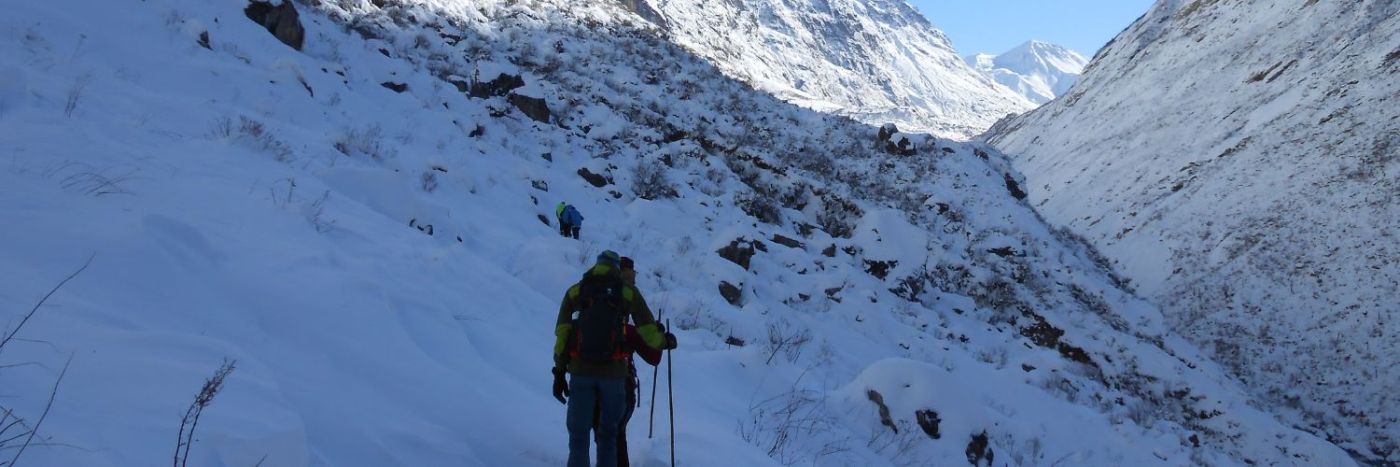
Crispy chilled air, frosty nostrils, headlamps on our helmets, silently side stepping our way up the mountain with our crampons on, hearing the squeak of snow under metal and the shaft of our ice axes gaining purchase in our uphill hands. Connected to each other by our invisible umbilical cord knowing that we are in this together, moving as one to our goal, the summit of Yala Peak. Quite literally walking in the footsteps of this diminutive giant and pioneer, Junko Tabei.
An expedition such as this is not all about reaching the summit of a mountain, it is about so much more. Bar one night under canvas we stay in tea houses up and back, sharing our experiences with fellow trekkers of all nationalities. Beating hearts are not reserved for us 2 legged humans, there are beating hearts of the winged and 4-legged variety all around us too from working yaks and donkeys to the wildlife which calls this valley its home as we wander through with a different purpose in mind. Will we be fortunate enough to see the ever-elusive Red Panda? I’ll keep my fingers crossed.
Before we head back to the hustle and bustle of Kathmandu we have one more historical stop en route. The Famous Farm, Nuwakot is nestled into the hillside and is a haven of tranquillity at the end of our mountain endeavours. A relaxing evening on the terrace to chat through our memories of Yala Peak is a perfect way to transition between expedition and city life.
On the 25 April we leave the beauty of the farm and head back to Kathmandu. This is a day of commemoration, of reflection and remembering all those who were lost in the earthquake which struck large swathes of Nepal on this day 10 years ago. A visit to Durbar Square to see how this flattened Unesco World Heritage Site has been rejuvenated and then onto The Garden of Dreams to see the chipmunks going about their business as we sip Masala tea or a chilled lassi before our final celebration in one of the many amazing restaurants of Thamel as tomorrow we say goodbye to my favourite country and fly back home.
I hope you can join me for our all female Yala Peak Trek in 2025. For more info, please visit our Yala Peak trip page here.
Many thanks,
Jo Bradshaw


